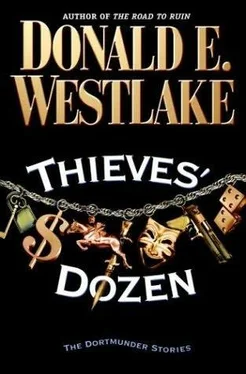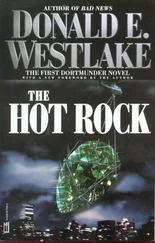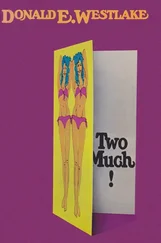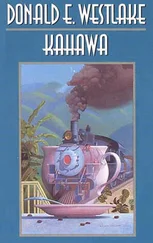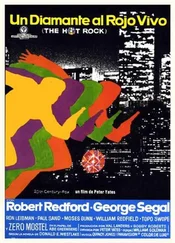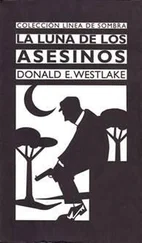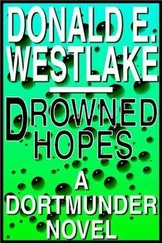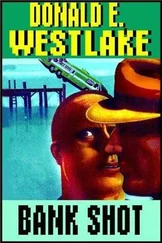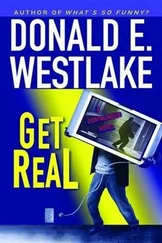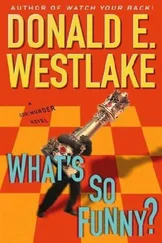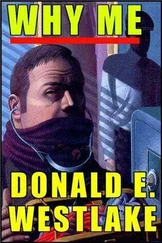On the third leap, he hooked a hand over the bottom rung of the fire escape, which his weight then brought downward, making it easier to climb. At the top, the flexible metal strips worked very nicely -to unlock the gate over the nearest window, then slip through between upper and lower sashes of the window itself to gently elbow the window lock out of the way. Slowly, silently, he lifted the window, leaned close to the opening, listened.
Nothing. No TV, no snoring, no whistling teakettle.
Algy slid over the sill, paused to close the gate and window behind himself, then looked around at a small, spartan bedroom. Framed photos of old-time boxers in manly stances were on the walls.
Algy started across the bedroom toward the doorway, and was nearly there when he became aware of the eyes. They were in the hall beyond the bedroom door, they were at crotch height, and they were connected to the largest, meanest-looking, scariest dog Algy had ever seen.
He stopped. The instant he did, the dog started. It didn't bark, because it was more serious than that. It didn't want to make a fuss; it merely wanted to kill Algy, slowly, with its teeth.
Algy turned. Window closed and barred. No time.
A shut door was to his right. He leaped to it, yanked it open, saw clothes hanging on a bar, lunged in among them, pulled the door shut; the dog thudded like a locomotive against the door.
Now what?
* * *
John Rumsey's flexible metal tools were just as efficacious as Algy's on that wooden door, but then Rumsey chose to climb the inside of the fence, finding hand and footholds on the angle irons that held fence to building, and so reach the fire escape's upper landing that way. (He was too short to have caught the fire escape by jumping.) He was surprised, at the top, to find that both gate and window were unlocked though shut, but he thought this meant merely that even someone as security-conscious as this tenant appeared to be might eventually grow a little slack. He entered noiselessly, shut gate and window and started across the room, getting just about as far as Algy had before making that same dreadful discovery.
Rumsey wasn't quite as fast as his friend had been. He made it into the closet, but left behind a triangle of trouser leg clenched between the dog's teeth.
Slamming the door, hearing the dog slam into it from the other side, Rumsey became horribly aware that he wasn't alone in here. Someone-or something-rustled and slurfed right next to him. "What?" he called. Wham, went the dog against the door.
"I'm not here!" cried a voice. "I can explain!"
A familiar voice. Hardly believing it, Rumsey said, "Algy?"
A little pause. "John?"
Wham, went the dog.
Stan, being a driver, took a slightly different approach. That is, he looked for a means of access that would, in its early phases, include a car. He drove around the block, noted the storefronts, the varied second-floor window treatments, the workmen applying plywood, the bored cops in their cruiser, then the nursing home (barely glancing at the wooden door in the wooden fence); on around the block, coming up at last to the far end of the building holding the bank.
On this block, the space equivalent to the nursing home at the other end was occupied by an open-sided four-story parking garage. Stan made note of that, turned at the corner, drove on down past the cops and the bank and the workmen, took that next turn, and pulled to a stop just short of the wooden fence.
Plywood now covered the former windows on the side of the bank, but the blue police sawhorses were still there, swathed in gay yellow Crime Scene tape. Stan got out of the BMW; opened the trunk, and leaned in to open the small pass-through door between trunk and backseat, placed there because the kind of people who own this kind of car usually also own skis.
The sawhorses came in three parts: two A-shaped sets of legs and the ten-foot-long crossbar, a two-by-six plank. Stan rescued two of these planks from their legs and the yellow tape and wrestled them into the BMWJ having to fold the front passenger seat down as well to ootch them in all the way. Then he drove around the block again, turned in at the parking garage, and took his ticket from the machine.
He found a useful parking slot on the sloping third level, backed into it so the rear of the BMW was close to the waist-high concrete-block barrier that was all the building had for exterior walls, and slid the sawhorse planks out of the car and across the intervening space between parking garage and bank building roof, though down the block from the bank, closer to the middle of the building. The planks fit very nicely, with good overhang at each end. Stan went across on all fours-two per plank-then walked briskly along the roof to the final fire escape. He went down that, found the unlocked window, climbed in, saw the dog, the dog saw him, Stan bolted for the closet, and soon another reunion took place, though not an entirely happy one.
Big knew he was a memorable guy, and so shouldn't walk past those cops in the cruiser, no matter how bored they were, more than once. He strolled down the block, took in the scene, turned down the side street, saw a couple of blue sawhorse leg sets lying on the sidewalk, remarked to himself that cops were usually
neater than that, and noticed that where the next to last sheet of plywood overlapped the last sheet of plywood, there was a bit of a gap where the plywood might have been screwed down a bit more securely but was not.
With a quick glance around to note that he was alone out here, he stepped to the plywood, inserted a hand in the space, and tugged. He had to tug three times, finally, and then be a little careful of jutting screws, but with a small pivot like the hippopotami in Fantasia he curled around the opening he'd made, and entered the bank. Two tugs were sufficient to pull the plywood back to its original position, or at least to look as though it were in its original position, and then Big went for a stroll through the empty, and rather messy, bank.
Morry Calhoun and his Infiniti had done a pretty complete job in here. He'd come angling through the plate glass, so that just by showing up he'd pretty well cleared out the front of the place, but then the Infiniti had also hit a couple of tables where people could fill out deposit slips and the like, and bounced them deeper into the bank, which is what took out the side windows as well as parts of the tellers' cages and all the frosted glass fronting the loan officer's separate cubicle. Shards of glass, slivers of wood, pens with chains attached, wheeled swivel chairs and wrinkled loan applications were scattered everywhere, all of it a bit hard to see, since Morry and his car had also taken out the electricity.
Big picked his way through the debris to the tellers' cages, where unfortunately there was no cash, since the bank had been closed when Morry arrived and all the money was in the vault for the night. The vault, when Big reached it, was undented but also unopened. It had a time lock, which Big had been hoping for, but with the electricity out, the vault thought it was still one-thirty in the morning, so forget that.
It was just too hard to see in here. Would the branch manager have a flashlight in his office? Why not?
The manager's office had also, at one time, been sheathed in frosted glass, which now went crunch-crunch beneath Big's feet. He opened desk drawers, pawed around, and in the bottom right found a small flashlight with a dying battery. By its dim light he saw there was nothing else of interest in the desk, but what was that underneath it?
The night deposit box. Morry's Infiniti had drop-kicked it across the bank, through the frosted glass, and into the manager's office, where it had come to rest partially under the desk.
Читать дальше
